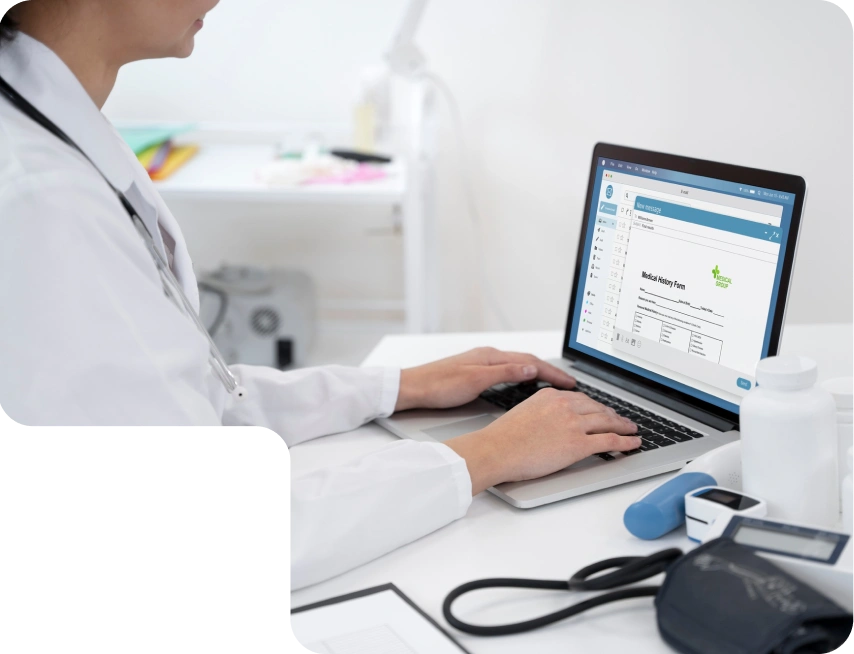Robotic-Assisted Cardiac Surgery Recovery, Benefits, and Safety
If you’ve just been told you or your loved one needs heart surgery, you’re probably overwhelmed. There’s fear, doubt, and plenty of questions. And now your doctor has also mentioned something called 'robotic-assisted surgery'.
And now you're sitting with your phone, typing into Google:
1. What is robotic heart surgery?
2. Will it leave a big scar?
3. Can I return to work soon or take care of my family?
4. Is robot-assisted heart surgery safe?
We hear them every day from people just like you – patients worried about the risks of major surgery and family members unsure of what’s best for their loved ones.
In this blog guide, we’ll work on clearing the misunderstandings around Robotic Cardiac Surgery, the risks and benefits.
Why Heart Surgery Isn’t What It Used to Be
Heart surgery has changed dramatically over the past few years. In the past, the success of Cardiac Surgery just meant survival.
Of course, the surgery worked. But the patients were left to deal with the long scars, painful and long healing time, and too long to return to the way they used to live and work.
But now it's not just about the surgery; it's about how quickly and safely you recover and return to life, and that's what robotic surgery can help with.
Using the newest & most advanced tools and minimally invasive techniques can help even old-age patients recover quickly with less pain and trauma.
What Is Robotic Cardiac Surgery, and What Is Its Process?
Robotic heart surgery is a Minimally Invasive Heart Surgery where the doctor uses a robotic arm to do keyhole surgery.
Instead of opening the chest to do the surgery, your surgeon makes a few tiny cuts, about the size of a keyhole. Through these cuts, special instruments and a 3D camera are inserted. The surgeon then uses a console to guide the robotic arms and perform the procedure.
The robot doesn’t act on its own – your surgeon controls every movement. The technology simply allows for greater precision and less trauma to your body.
This robotic surgery can be used to treat several types of heart conditions, including:
1. Heart valve repairs and replacements
2. Congenital defects like holes in the heart (ASD, VSD)
3. Selected coronary artery blockages
4. Certain paediatric heart conditions in children
How Does Robotic Surgery Help in Faster Recovery?
“How will it actually help me?”
That’s the usual question every patient asks. The biggest advantage is in how your body responds afterwards.
Because the chest bone isn't cut and there's minimal disturbance to surrounding tissue, your body heals faster and with fewer complications. Most patients:
1. Feel less pain after surgery
2. Are up and walking by the next day
3. Go home in about 3 to 5 days
4. Resume light activities within 2 to 3 weeks
5. Experience minimal scarring
Emotionally, patients often say they don’t feel like they’ve “been through heart surgery” at all—they feel like themselves again, much sooner than expected.
We’ve seen patients return to work in just a month, without fear of further injuring themselves and caring for children or elderly parents, and they have regained trust in their own health much quicker than the normal surgery.
Who Can Get the Robotic-Assisted Heart Surgery?
Robotic-Assisted Heart Surgery isn’t right for every single patient, but for many it is a safe and effective approach.
1. You’re between the ages of 40 and 70 with a heart valve issue or coronary blockage
2. You’ve been advised to undergo heart surgery, but are hesitant about open-heart procedures
3. You're caring for a child with a congenital heart condition and looking for less invasive solutions
4. You’re in good general health and looking to reduce hospital time, pain, and scarring
Are There Any Risks Associated with Robotic-Assisted Heart Surgery?
Almost every surgery, be it a small or a major one, traditional or robot-assisted, has risks involved. However, robotic surgery has less risk compared to traditional surgeries.
As with any procedure, the potential risks can be affected by your overall health, the complexity of your condition, and the experience of your surgical team.
Some of the possible risks can include:
1. Bleeding during or after surgery
2. Infection (though it most likely doesn’t occur due to the smaller incision)
3. Complications from anaesthesia
4. Conversion to open surgery mid-procedure (in rare cases, if access becomes difficult)
5. Technical issues with the robotic system (again, rare and always managed by a trained team)
We take every step to reduce these risks. From thorough pre-surgery evaluations and continuous monitoring during the procedure to a surgical team that’s extensively trained in both robotic and traditional cardiac surgery, we ensure everything is met to reduce the risk drastically.
Why Choose GKNM for Robotic-Assisted Heart Surgery?
Robotic-assisted surgery is not just about having the latest machines at hand – you also need an experienced surgical team, the right infrastructure, and a patient-first approach to make it successful.
At GKNM, we combine:
1. Decades of excellence in cardiac care
2. Surgeons trained extensively in robotic techniques
3. A dedicated cardiac ICU and aftercare team
4. Patient education and support at every step
We focus on not just treating the patient’s condition but also helping them through their emotional and vulnerable phase.
Final Thoughts
Robotic-assisted heart surgery is not something you do simply because it is advanced. It's how you decide to get through recovery with less pain, less scarring, and more comfort, especially when life does not allow you to slow down.
If heart surgery is something you need to consider, it's worth considering the less invasive option.
At GKNM, we’ll help you understand your options clearly and guide you toward the approach that’s safest and most effective for your recovery.


